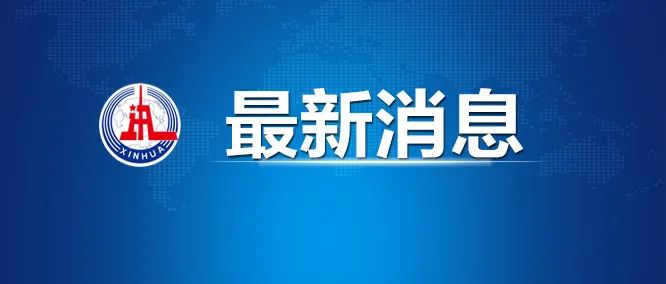One Drop, 4.18 Uses: How Semiconductor Giant ASE UsesIT to Achieve Ultra-High Water Recycling Rates
TAIPEI, TAIWAN – ASE, a leading semiconductor manufacturing company, has achieved an impressive water recycling rate, allowing each drop of water to be reused an average of4.18 times before being discharged. This remarkable feat is the result of a comprehensive water resource management strategy that leverages digital technologies and AI, showcasing amodel for sustainable manufacturing in the water-intensive semiconductor industry.
ASE’s water management strategy revolves around three key pillars: reduction, recycling, and reuse. Since 2018, the company has been integrating digital technologies into itssustainability transformation, including water resource management. This approach has significantly improved water efficiency, reduced water consumption, and enabled more efficient water resource management.
At the heart of ASE’s water recycling system is a large-scale centralized water recycling plant. This plant utilizes advanced digital technologies and AI to further purify and filter process wastewater, enabling its reuse in production lines. The plant’s operations offer a glimpse into how ASE leverages IT to enhance water recycling efficiency.
Semiconductor manufacturing requires ultra-pure water with a purity level of 4 nines (99.99%) to prevent impurities from affecting the production process. Every drop of water entering the plant undergoes rigorous multi-stage filtration, including multi-media filtration (MMF), ultrafiltration (UF), and reverse osmosis (RO). This ensures the recycled water reaches the required purity level for reuse in production.
To maximize recycling efficiency, the plant employs multiple mechanisms to record and track each filtration and treatment stage. A dedicated control room with real-time monitoring is equipped with screens displaying all data, allowing management personnel to monitor and analyze the data, ensuring efficient water resource utilization. The system also enables immediate intervention in case of any issueswithin the recycling system, preventing disruptions to subsequent production processes.
ASE’s water recycling journey starts with incoming tap water, which is used in production processes. After use, the wastewater is collected and treated at the recycling plant, where it is purified and reused. This cycle allows each drop of water to be reused4.18 times before being discharged. The plant achieves a recycling rate of 75%, meaning for every 1,000 tons of process wastewater discharged, the plant can produce 750 tons of recycled water for reuse.
Beyond monitoring wastewater treatment, the plant also functions as a dispatch center, providing real-time information on water usage across all facilities. This enables efficient water allocation during periods of water scarcity.
ASE has established a digital water resource management platform that integrates water usage and recycling data, along with water balance diagrams for each facility. This platform provides daily water situation information. Last year, ASE implementeda water situation warning system that monitors external water supply information and real-time water usage and storage levels in each factory, enhancing water allocation and support capabilities. This system also incorporates mobile applications, allowing personnel to access information on their smartphones for prompt response to water outages and changes in water situations.
The system also includes afactory water shortage resilience mechanism that utilizes AI models to analyze daily water usage and existing water storage levels, predicting the duration of water reserves in each factory. This allows for proactive water network adjustments and support, enabling ASE to manage water resource risks intelligently and address challenges posed by climate anomalies.
ASE has also integrated AI into itswater recycling operations to enhance both utilization and management efficiency. For instance, AI assists in equipment maintenance, such as determining when to clean UF equipment. Traditionally, this task involved on-site inspections to identify blockages. Delays in cleaning could affect flow rates and eventually lead to equipment blockages, impacting recycling efficiency.
However, with numerous UF equipment sets in the plant, manual inspections were time-consuming and inefficient. To address this, ASE combined data analysis and digital visualization tools to visualize information like water pressure changes, enabling personnel to easily identify trends in daily data and understand blockage situations in each equipment set without on-site inspections. This reducesworkload and even facilitates AI-assisted early warning, preventing blockages and enhancing recycling efficiency. While AI provides insights, final decisions are still made by human operators.
AI is also used to optimize recycling processes. For example, ASE developed an AI-powered intelligent chemical dosing module for wastewater treatment. This module monitors water qualityat the wastewater plant and predicts effluent water quality, enabling early warning of anomalies and reducing response times. Since implementing the AI module, ASE has reported a 30% reduction in chemical dosage for wastewater systems and a 35% reduction in sludge.
ASE also utilizes ion exchange resin (2B3T)to adsorb ions from water, increasing the purity of recycled water. AI models are now used to calculate the regeneration time for 2B3T, replacing traditional manual timing operations. This not only reduces the risk of human error but also optimizes water production capacity, leading to an estimated annual reduction of 5.6 million tons of tap water usage at the factory.
The plant operates 24/7, with two shifts in the control center. To enhance operational convenience, mobile tablets have been introduced in the plant, allowing personnel to record and view facility operating conditions during their rounds.
ASE continues to expand the plant’s hardware infrastructure and optimize its systems. Currently, the plant can process up to 30,000 tons of water daily, relying on digital technologies and AI to enhance recycling efficiency. Since its commissioning in 2015, the plant has accumulated a total of 30 million tons of recycled productionwater by March 2023, equivalent to the water consumption of Kaohsiung City residents for about 1.5 months.
In 2023 alone, the plant provided approximately 5.61 million tons of recycled water to ASE’s Kaohsiung plant, achieving arecycling rate of 75%.
ASE’s successful implementation of digital technologies and AI in water resource management demonstrates a compelling model for sustainable manufacturing in the semiconductor industry. By optimizing water usage and maximizing recycling, ASE is not only minimizing its environmental impact but also contributing to a more sustainable future.
Views: 0
